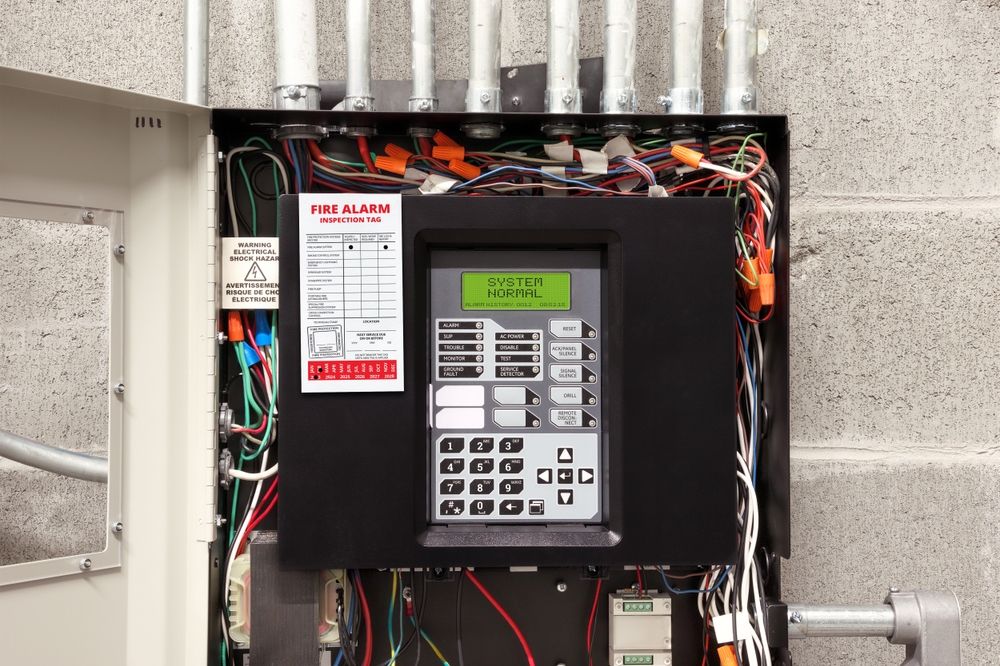Fire and Life Safety Systems in Commercial Inspections

Fire and life safety systems in commercial inspections play a critical role in safeguarding both property and human lives. These systems are designed to detect, contain, and suppress potential fire hazards, ensuring that any commercial space operates within the standards necessary for the protection of its occupants. With fires being one of the most destructive events that can affect a business, it is paramount that commercial inspections thoroughly evaluate the effectiveness and functionality of fire and life safety systems. Whether it’s a retail establishment, office complex, or industrial facility, ensuring that fire and life safety systems are up to code is a key component of risk management and compliance. This blog will explore the essential components of fire and life safety systems, the role of commercial inspections in evaluating these systems, common challenges faced, and the legal implications for businesses.
Importance of Fire and Life Safety Systems
Fire and life safety systems in commercial inspections are not only important for compliance with building codes but also for ensuring the safety of people inside the building. These systems include a range of components, such as fire alarms, sprinkler systems, emergency lighting, fire extinguishers, and smoke control systems. The primary objective of these systems is to minimize the risks associated with fires, from detection to evacuation, and prevent the loss of life or significant property damage.
During commercial inspections, fire safety systems are carefully evaluated to ensure that they meet both local and national standards. These standards are set by organizations such as the National Fire Protection Association (NFPA) and the Occupational Safety and Health Administration (OSHA). These standards outline how the systems should be installed, maintained, and operated, ensuring that they provide adequate protection in the event of an emergency. Any discrepancies found during an inspection can result in costly fines, delays in operations, or worse—fatalities if a fire were to occur.
In addition to protecting life, fire safety systems also serve a financial purpose. Businesses that fail to comply with fire safety regulations risk facing costly litigation, property damage, and even closure in extreme cases. Preventative measures such as regular inspections and maintenance of fire safety systems help mitigate these risks, ensuring a safe environment for employees, customers, and visitors.
Key Fire and Life Safety Components in Commercial Spaces
Fire and life safety systems are composed of several key components, each of which plays an integral role in protecting commercial buildings. During inspections, all components need to be evaluated for functionality and compliance with safety regulations. Some of the key systems inspected include:
-
Fire Alarm Systems: Fire alarm systems are one of the most essential elements of fire and life safety. These systems are designed to detect smoke, heat, or fire, and alert building occupants. In larger commercial spaces, fire alarms must be interconnected, ensuring that if a fire is detected in one area, all alarms in the building will sound. Inspections ensure that the alarm is loud enough to be heard throughout the entire building and that it functions properly in an emergency scenario.
-
Sprinkler Systems: Sprinkler systems are another crucial component, particularly in large commercial buildings. These systems automatically deploy water in the event of a fire, helping to suppress the flames and slow the spread of fire. During inspections, professionals assess the sprinkler coverage to ensure that there are no obstructions, the system is properly pressurized, and the sprinkler heads are in good condition. Any damage or malfunctioning components must be addressed immediately.
-
Emergency Lighting and Signage: In the event of a fire, it’s essential that building occupants can safely evacuate. Emergency lighting systems and exit signage provide clear directions to exits and help illuminate escape routes, especially when power is lost. Inspections verify that these systems are functional and strategically placed throughout the building. Poorly marked or malfunctioning exit signs can lead to confusion and hinder evacuation efforts during a fire emergency.
-
Fire Extinguishers: Fire extinguishers are required in commercial spaces to provide a first line of defense in the event of a small fire. Inspections check that fire extinguishers are readily accessible, in the right locations, and fully charged. They also ensure that employees are trained on how to use fire extinguishers in case of an emergency. Regular maintenance is necessary to guarantee the extinguishers will work properly when needed.
-
Smoke Control Systems: In large commercial buildings, smoke control systems are crucial in managing the movement of smoke during a fire. These systems help prevent smoke from spreading to areas that may hinder evacuation efforts. During inspections, professionals assess the functionality of these systems to ensure they operate as designed, limiting the impact of smoke and improving the chances of safe evacuation.
The Role of Commercial Inspections in Fire and Life Safety
The role of commercial inspections in fire and life safety is multifaceted. Inspections ensure that fire safety systems are installed according to code and remain operational throughout their service life. Regular inspections also help businesses identify potential fire hazards that could compromise the effectiveness of fire safety systems.
During a commercial inspection, professionals will assess the condition of all fire safety equipment and ensure that it complies with local building codes and fire regulations. They may check for issues such as expired fire extinguishers, blocked fire exits, or outdated fire alarm systems. Inspections are typically conducted on a periodic basis—often annually—but can be more frequent depending on the type of business and local regulations. For example, high-risk businesses, such as manufacturing plants, may require more frequent inspections due to the increased likelihood of a fire hazard.
Furthermore, inspections ensure that fire and life safety systems are integrated into the building’s design and layout. A comprehensive inspection will also take into account the adequacy of escape routes and the building’s overall fire resistance. Inspectors evaluate whether the building’s fire compartmentation—how fire is contained within specific areas—is sufficient and whether the fire protection systems are well-maintained. These measures can be the difference between a minor fire incident and a catastrophic event.
Challenges in Ensuring Compliance with Fire Safety Systems
While fire and life safety systems in commercial inspections are essential for protecting life and property, ensuring compliance can sometimes be challenging. One of the main obstacles businesses face is maintaining systems to the required standards. Fire safety systems require regular maintenance, testing, and monitoring to ensure they are functional when needed. However, businesses may find it difficult to keep up with the cost and logistics of these ongoing requirements, especially in larger commercial buildings or older properties.
Another challenge is staying up-to-date with changing fire safety regulations. Local fire codes and national standards evolve over time, and what was considered compliant a few years ago may no longer meet current requirements. For example, the installation of new technologies such as smart fire alarm systems or fire-resistant materials may require building upgrades that can be costly and disruptive. Inspections help ensure that businesses remain compliant with the latest codes, but businesses must remain proactive in staying informed about these changes.
One other challenge involves human error. While fire and life safety systems are designed to be automated, human negligence can still play a role in failing to maintain systems. For example, fire exits may become blocked by furniture or equipment, or employees may accidentally disable a fire alarm system. During inspections, these types of issues are identified and corrected, but regular staff training and awareness are essential for preventing them in the first place.
Legal Implications and Risk Mitigation
The legal implications of failing to maintain proper fire and life safety systems in commercial spaces can be severe. In addition to the potential for injury or loss of life, businesses that fail to comply with fire safety regulations may face legal action. This can include fines, penalties, and liability for damages in the event of a fire. In some cases, businesses may even be forced to close until they bring their fire safety systems up to code.
Beyond the legal penalties, businesses that fail to maintain their fire and life safety systems also risk damage to their reputation. A company that is known for neglecting safety protocols may face a loss of trust from customers, employees, and investors. In a world where corporate responsibility is highly valued, ensuring the safety of a commercial space is a critical aspect of brand image and long-term success.
To mitigate risks, businesses must take a proactive approach to fire safety. This includes conducting regular fire and life safety inspections, ensuring that all systems are functioning properly, and providing ongoing training for employees. Maintaining accurate records of inspections and maintenance can also help demonstrate compliance in the event of an audit or legal inquiry.
Conclusion
Fire and life safety systems are vital to the protection of people and property in commercial spaces. Through regular commercial inspections, businesses can ensure that their fire safety systems are functional and compliant with the latest regulations. These inspections not only help prevent catastrophic events but also provide financial and legal benefits by minimizing risks and maintaining compliance.
